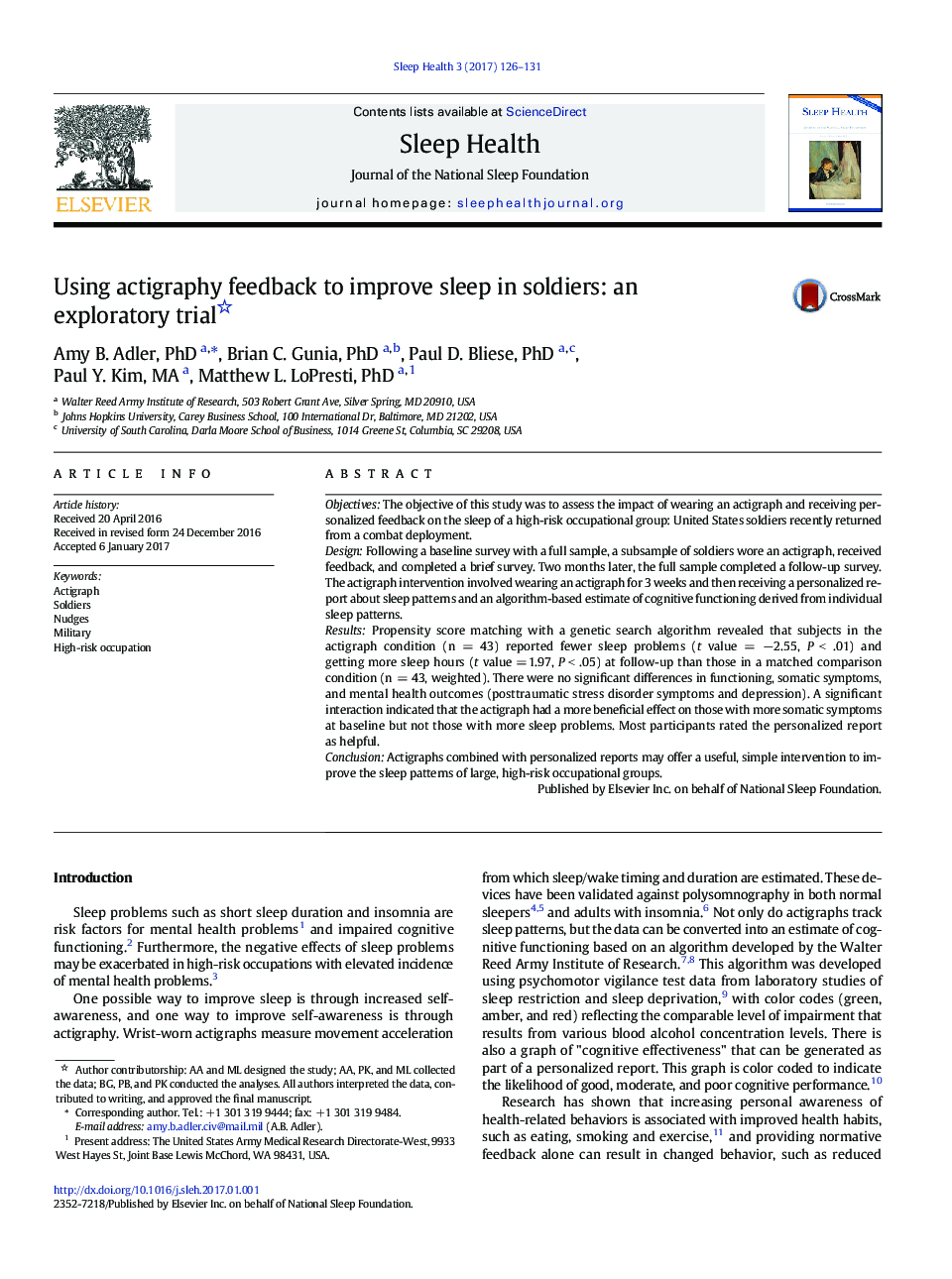| Article ID | Journal | Published Year | Pages | File Type |
|---|---|---|---|---|
| 5039519 | Sleep Health | 2017 | 6 Pages |
ObjectivesThe objective of this study was to assess the impact of wearing an actigraph and receiving personalized feedback on the sleep of a high-risk occupational group: United States soldiers recently returned from a combat deployment.DesignFollowing a baseline survey with a full sample, a subsample of soldiers wore an actigraph, received feedback, and completed a brief survey. Two months later, the full sample completed a follow-up survey. The actigraph intervention involved wearing an actigraph for 3 weeks and then receiving a personalized report about sleep patterns and an algorithm-based estimate of cognitive functioning derived from individual sleep patterns.ResultsPropensity score matching with a genetic search algorithm revealed that subjects in the actigraph condition (n = 43) reported fewer sleep problems (t value = â2.55, P < .01) and getting more sleep hours (t value =1.97, P < .05) at follow-up than those in a matched comparison condition (n = 43, weighted). There were no significant differences in functioning, somatic symptoms, and mental health outcomes (posttraumatic stress disorder symptoms and depression). A significant interaction indicated that the actigraph had a more beneficial effect on those with more somatic symptoms at baseline but not those with more sleep problems. Most participants rated the personalized report as helpful.ConclusionActigraphs combined with personalized reports may offer a useful, simple intervention to improve the sleep patterns of large, high-risk occupational groups.
